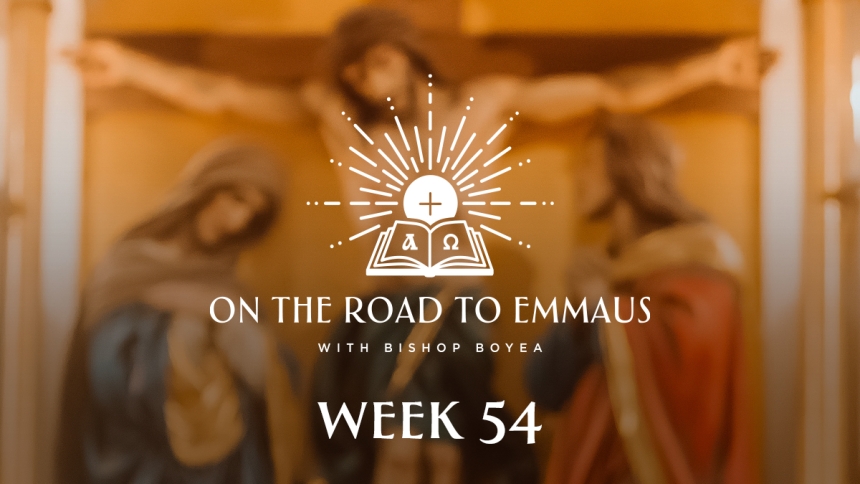
June 21, 2024
Feast of Saint Aloysius of Gonzaga
Dear brothers and sisters in Christ,
This is going to be a touchy subject! How to receive Holy Communion! Last month, we noted the simple, “Body of Christ,” and “Blood of Christ,” to which we respond, “Amen!” That is the easy part. What is our body doing, though, as our voice is proclaiming this “Amen”? That is the subject of this week’s On the Road to Emmaus.
In the Traditional Latin Mass it was quite standardized. Everyone would kneel at the Communion Rail, which was covered with a white cloth, and would receive the Body of Christ on the tongue. There was no “Amen” said out loud. Instead, the priest distributing the Body of Christ would say “Amen”. And there was no reception of the Blood of Christ.
The rubrics or directions in the current Missal say nothing about our posture. Rather, in the General Instruction at the beginning of the Missal we find some help. Article #42 notes: “A common bodily posture, to be observed by all those taking part, is a sign of unity of the members of the Christian community…for it expresses the intentions and spiritual attitude of the participants and also fosters them.” And in Article #43, “if appropriate, they may sit or kneel during the period of sacred silence after Communion.”
Article #160 provides more help in the United States. It says: “Holy Communion is to be received standing, unless an individual member of the faithful wishes to receive Communion while kneeling…. When receiving Holy Communion, the communicant bows his or her head before the Sacrament as a gesture of reverence and receives the Body of the Lord from the minister. The consecrated host may be received either on the tongue or in the hand, at the discretion of each communicant.”
Two aspects of this behavior are to be noted: reverence and receiving. Certainly, we prepare as we walk forward in a reverent manner and then bow before reaching the minister. I notice that some genuflect on their way forward. This is all an attempt to show proper respect for Jesus Christ present before us in this most miraculous of ways. He does want to be one with us and thus he gives himself, body and soul, humanity and divinity, to us in this heavenly food. This deserves our joy and our reverence.
Yet, this entire movement toward the altar and Holy Communion is also a process of reception. We do not grab or grasp or take. Rather, we always receive what is entirely a gift. This is a recognition that all is grace. Certainly, we seek to be as worthy as we can be to receive Him in spite of the fact that we are always sinners. Our basic, underlying attitude must be that of Mary, the sinless one, who received the Lord into herself when she said, “Let it be done unto me as you say.” We too receive so as to allow the Lord to enter into us and to accomplish his will in our lives as we become what we eat, the Lord himself.
Now to this week’s challenge: I am challenging you to volunteer your time to a Catholic charitable organization. A list of suggested agencies is attached. Why am I challenging you to do this? Because corporal works of mercy should be among the manifestations of our Christianity which naturally overflows from our interior life which has been fostered and fueled by our reception of Christ in the Holy Eucharist.
+ Earl Boyea
Bishop of Lansing
